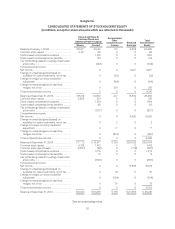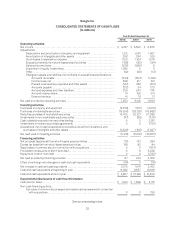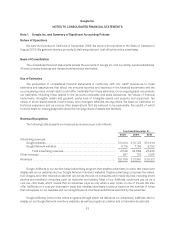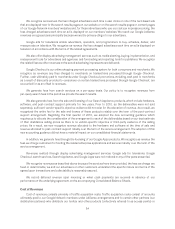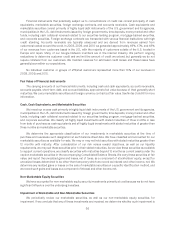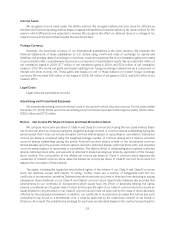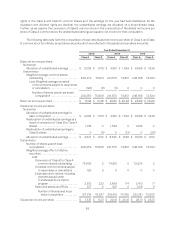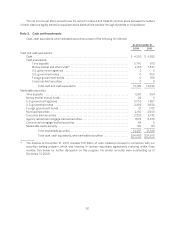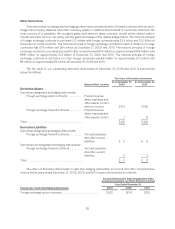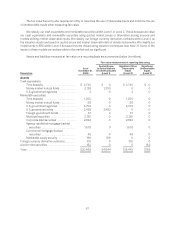Google 2010 Annual Report Download - page 71
Download and view the complete annual report
Please find page 71 of the 2010 Google annual report below. You can navigate through the pages in the report by either clicking on the pages listed below, or by using the keyword search tool below to find specific information within the annual report.Income Taxes
We recognize income taxes under the liability method. We recognize deferred income taxes for differences
between the financial reporting and tax bases of assets and liabilities at enacted statutory tax rates in effect for the
years in which differences are expected to reverse. We recognize the effect on deferred taxes of a change in tax
rates in income in the period that includes the enactment date.
Foreign Currency
Generally, the functional currency of our international subsidiaries is the local currency. We translate the
financial statements of these subsidiaries to U.S. dollars using month-end rates of exchange for assets and
liabilities, and average rates of exchange for revenues, costs, and expenses. We record translation gains and losses
in accumulated other comprehensive income as a component of stockholders’ equity. We recorded $84 million of
net translation losses in 2008, $77 million of net translation gains in 2009, and $124 million of net translation
losses in 2010. We record net gains and losses resulting from foreign exchange transactions as a component of
interest and other income, net. These gains and losses are net of those realized on forward foreign exchange
contracts. We recorded $36 million of net losses in 2008, $8 million of net gains in 2009, and $29 million of net
losses in 2010.
Legal Costs
Legal costs are expensed as incurred.
Advertising and Promotional Expenses
We expense advertising and promotional costs in the period in which they are incurred. For the years ended
December 31, 2008, 2009, and 2010 advertising and promotional expenses totaled approximately $266 million,
$353 million, and $772 million.
Note 2. Net Income Per Share of Class A and Class B Common Stock
We compute net income per share of Class A and Class B common stock using the two-class method. Basic
net income per share is computed using the weighted-average number of common shares outstanding during the
period except that it does not include unvested common shares subject to repurchase or cancellation. Diluted net
income per share is computed using the weighted-average number of common shares and, if dilutive, potential
common shares outstanding during the period. Potential common shares consist of the incremental common
shares issuable upon the exercise of stock options, warrants, restricted shares, restricted stock units, and unvested
common shares subject to repurchase or cancellation. The dilutive effect of outstanding stock options, restricted
shares, restricted stock units, and warrants is reflected in diluted earnings per share by application of the treasury
stock method. The computation of the diluted net income per share of Class A common stock assumes the
conversion of Class B common stock, while the diluted net income per share of Class B common stock does not
assume the conversion of those shares.
The rights, including the liquidation and dividend rights, of the holders of our Class A and Class B common
stock are identical, except with respect to voting. Further, there are a number of safeguards built into our
certificate of incorporation, as well as Delaware law, which preclude our board of directors from declaring or paying
unequal per share dividends on our Class A and Class B common stock. Specifically, Delaware law provides that
amendments to our certificate of incorporation which would have the effect of adversely altering the rights,
powers, or preferences of a given class of stock (in this case the right of our Class A common stock to receive an
equal dividend to any declared on our Class B common stock) must be approved by the class of stock adversely
affected by the proposed amendment. In addition, our certificate of incorporation provides that before any such
amendment may be put to a stockholder vote, it must be approved by the unanimous consent of our Board of
Directors. As a result, the undistributed earnings for each year are allocated based on the contractual participation
58





